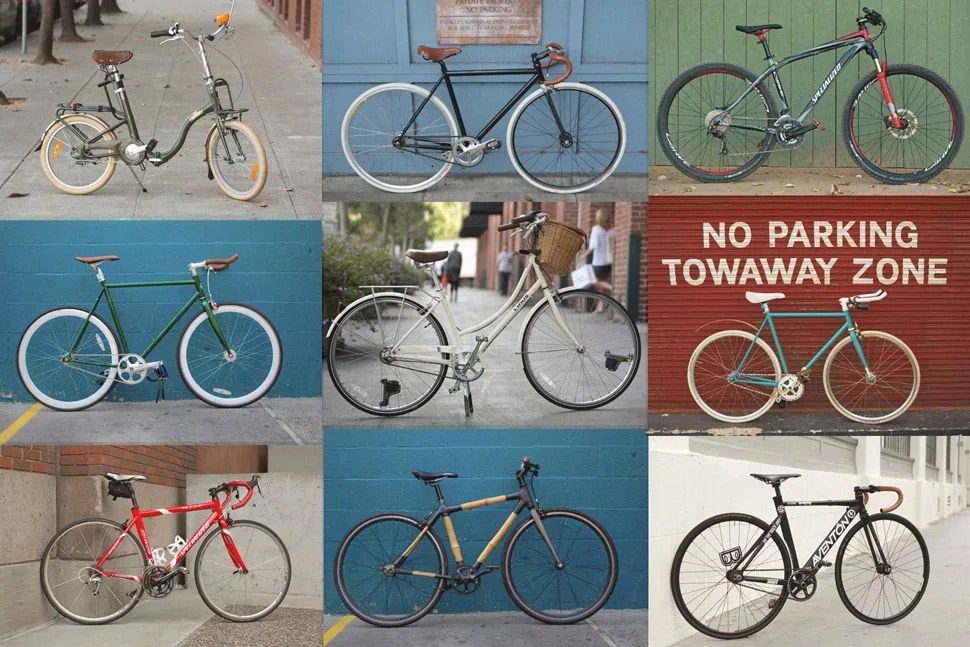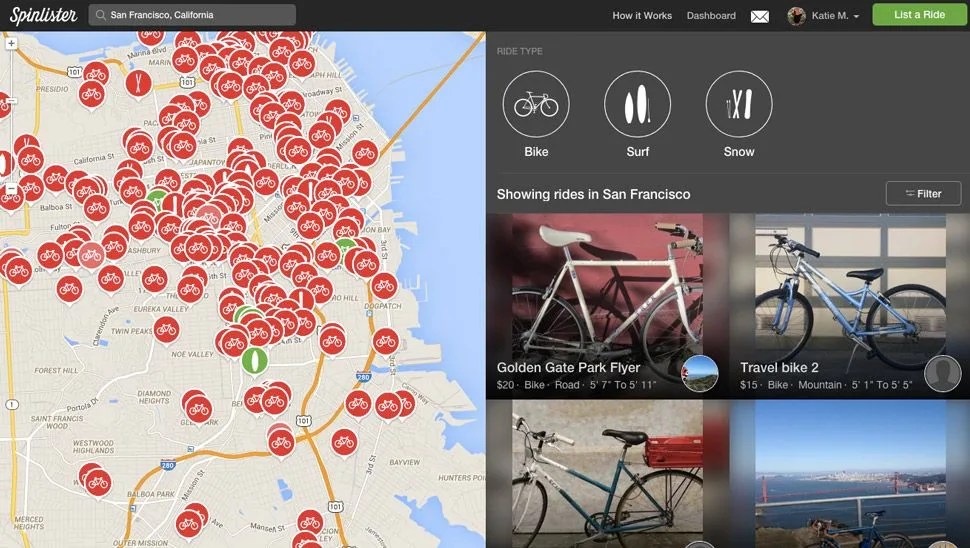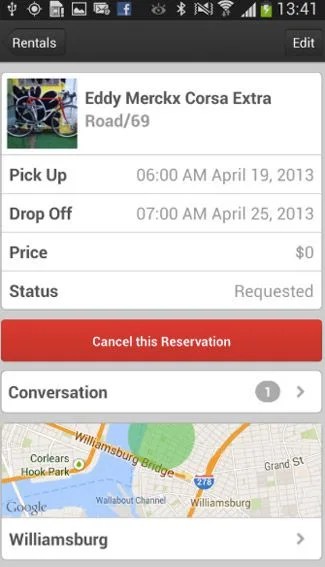If you’re traveling around New York, Los Angeles, San Francisco, Portland or Austin anytime soon, Marcelo Loureiro wants you to ride a stranger’s bike. He’s not endorsing a national cyclist crime syndicate — just Spinlister.
MORE BIKING: Cold Weather Cycling Apparel | With Zwift, Cycling Meets Video Game | Riding California Wine Country with a Local Pro
To use a tired metaphor, Spinlister is AirBnb for bikes. Users take a photo of their bike and upload it to Spinlister, along with its location, size, specs and a rental rate (by hour, day or week). The whole process takes about 90 seconds, according to the company. Those searching for bikes to use — 90 percent are tourists looking to bike around new cities, said Andrew Batey, Spinlister’s CMO — contact bike owners through the app and set up a time and place to meet. Bikes are rarely damaged and, according to Batey, a bike has never been stolen by a renter. Just in case, Spinlister offers an insurance policy of up to $10,000 for some bikes.
The company’s rise has been meteoric. At the start of 2013, Loureiro, a Brazilian serial entrepreneur, bought a stagnant bike-share startup from two businessmen in San Francisco. Within a year he had brought on a new team and transformed the company. Spinlister is now the world leader in peer-to-peer bike sharing and it’s still growing faster than even Loureiro expected.
“January is a dead month for biking and it was our best month so far”, said Batey, about their operations in 2015. The team can’t keep up with demand. “It’s crazy. System-wide there’s about 60 percent more demand than we have bikes.”

For Loureiro and Batey, keeping up with that demand means developing a community. Spinlister’s low prices (prices range from $1 to $400 per day, with a median around $15-$25 per day for most bikes) mean it won’t attract customers by supplementing incomes like AirBnb can for homeowners or Uber for drivers — and the company requires a large pool of very active users to work properly. By partnering with government park services, tri clubs and cycling teams, Spinlister has hosted community events all over the five cities where they’re currently focused, meeting bikers face to face. (This year, as well as last year, they are the official bike share sponsor of Ironman.) The company uses these events to get the word out and to challenge bikers to sign up using their app; everyone who signs up gets a personal email from someone on the Spinlister team. This groundwork is necessary because, more than other, less personal sharing economies, Spinlister lives and dies with its community.

